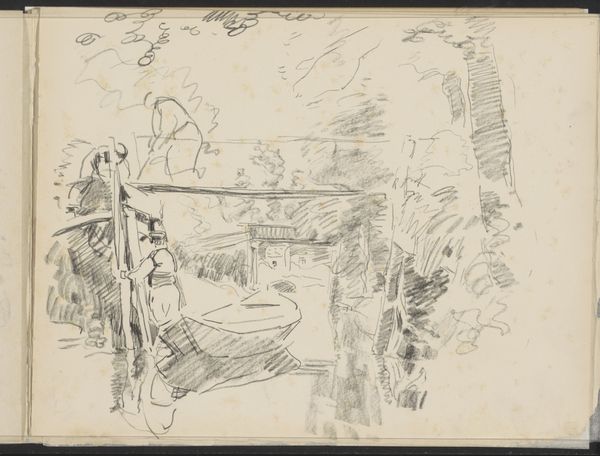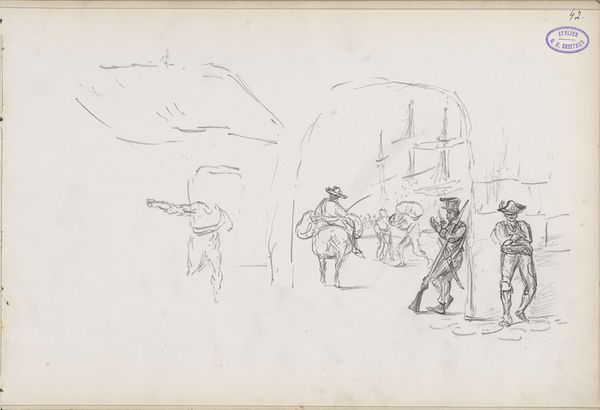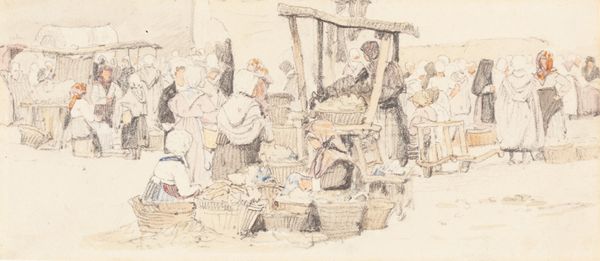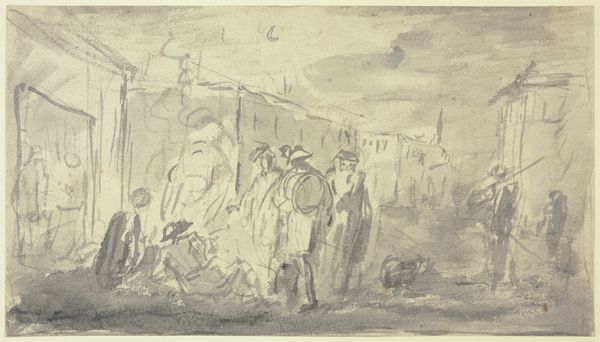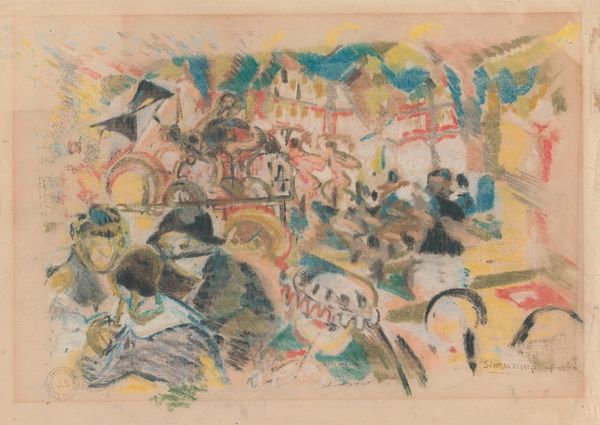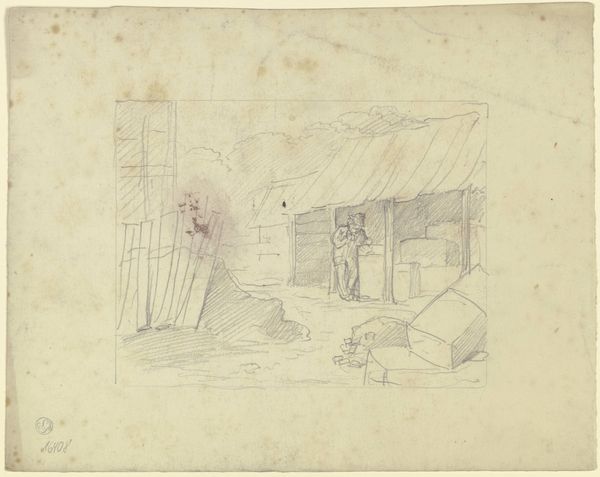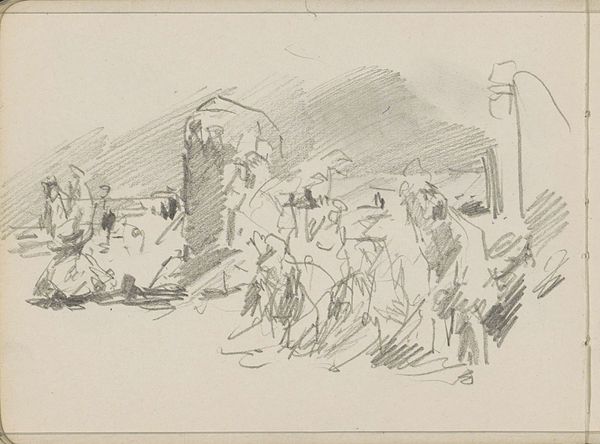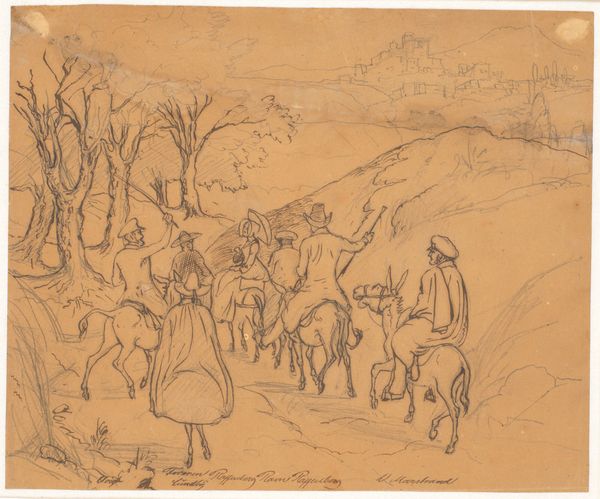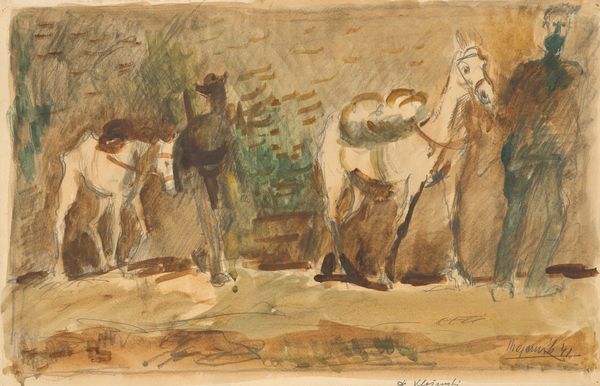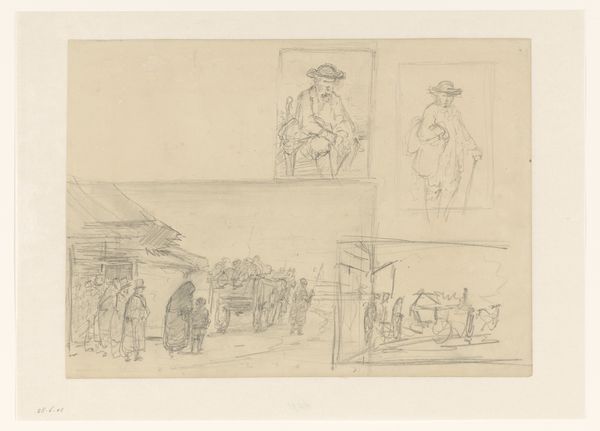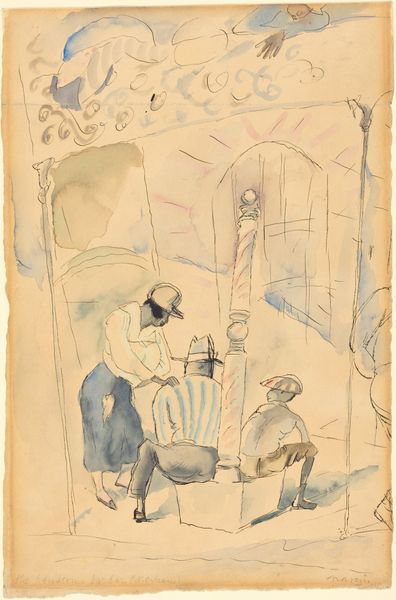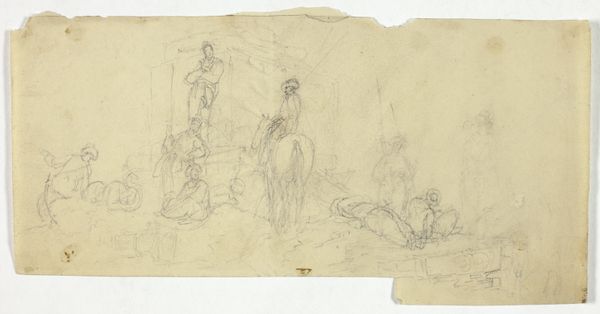
Dimensions: sheet: 18.1 x 23.1 cm (7 1/8 x 9 1/8 in.) mount: 23 x 31 cm (9 1/16 x 12 3/16 in.)
Copyright: National Gallery of Art: CC0 1.0
Editor: Here we have "Havana," a watercolor and drawing by Jules Pascin, created sometime between 1915 and 1920. It strikes me as a very fleeting, almost dreamlike image of a bustling city scene. What symbols or imagery jump out at you? Curator: It's interesting you call it dreamlike. Consider the donkeys, prominently placed. Across cultures, the donkey's symbolism varies. They can represent humility and hard work, but also stubbornness, even foolishness. Editor: So, its presence could suggest different things depending on the viewer’s cultural background? Curator: Exactly. And note the almost translucent quality of the figures – they're there, but somehow ephemeral. Could this relate to memory? Perhaps Pascin isn't just depicting Havana but capturing its impression on the mind, blurring the literal with emotional resonance. Editor: That's fascinating. The city as a feeling, not just a place. And those ripe bananas… the abundance contrasts the sparse rendering of the people. Curator: What might that contrast signify? The lushness of the land sustaining the transient nature of human life, perhaps? Editor: Perhaps! This makes me consider my own assumptions about cityscapes and how they represent constant change but also… constant reliance on resources and history. Curator: Indeed. These visual cues unlock layers of cultural and personal understanding. The magic of art, isn’t it? Editor: I’m really glad I noticed the donkeys, because I hadn't previously considered them in such symbolic terms. Thanks!
Comments
No comments
Be the first to comment and join the conversation on the ultimate creative platform.
